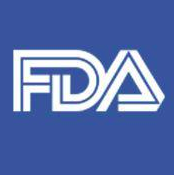Obama’s 2016 Budget Includes Food Safety Funding and Proposal of New Agency

The oversight of food safety has been given a major boost with President Barack Obama’s proposed $4 trillion fiscal year 2016 budget. According to the official budget, it includes “$1.6 billion in total program resources to bolster food safety activities, including an increase of $301 million for the U.S. Food and Drug Administration (FDA) to implement new safety measures under the Food Safety Modernization Act for domestic and imported foods.”
Along with new funding comes a number of court-ordered deadlines the FDA must meet:
- August 30, 2015: Issue final rules on preventive controls for human and animal foods.
- October 31, 2015: Issue final rules on produce safety, Foreign Supplier Verification Programs and accreditation of third-party auditors.
- March 31, 2016: Issue final rules for sanitary transportation.
- May 31, 2016: Issue final rules for intentional adulteration.
The current plan is for part of the food safety funds to be allocated as follows:
$32 million for National Integrated Food Safety System
- To help states join forces and educate food growers.
$25.5 million for New Import Safety Systems
- Implementation of the Foreign Supplier Verification Program will require the training of more than 400 FDA staff members, along with new personnel for auditing purposes.
$25 million for Inspection Modernization Training
- Specialized inspectors for food facilities who will use gathered information to further plan the priority, frequency, depth and approach of future inspections.
$11.5 million for Industry Education and Technical Assistance
- Support for state agencies as well as other public, private and academic institutions.
$4.5 million for Risk Analytics and Evaluation
- To research where the greatest health risks lie and to start programs to reduce those risks.
$4 million for Technical Staffing and Guidance Development
- For recruiting new FDA experts to implement industry best practices.
Besides new funding, President Obama’s new plan also asks for Congress to combine several programs under the Department of Health and Human Services, including the U.S. Department of Agriculture’s (USDA) Food Safety and Inspection Service (FSIS) and the FDA’s food inspection program.
According to Agriculture Secretary Tom Vilsack, “It’s not about tradition. It’s not about turf. It’s about food safety. We have a system that no one can contend is as effective or efficient as it needs to be.”
As it currently stands, most food safety responsibilities fall under FSIS (meat, poultry, processed eggs) and the FDA (mostly all other food supply). In total, at least 12 agencies play some part in overseeing the U.S. food supply. The regulation of some food products becomes convoluted when FSIS, FDA, USDA and other agencies must share regulation responsibility. Implementing a single agency to oversee U.S. food safety would help to alleviate the confusion.
Looking for a reprint of this article?
From high-res PDFs to custom plaques, order your copy today!





